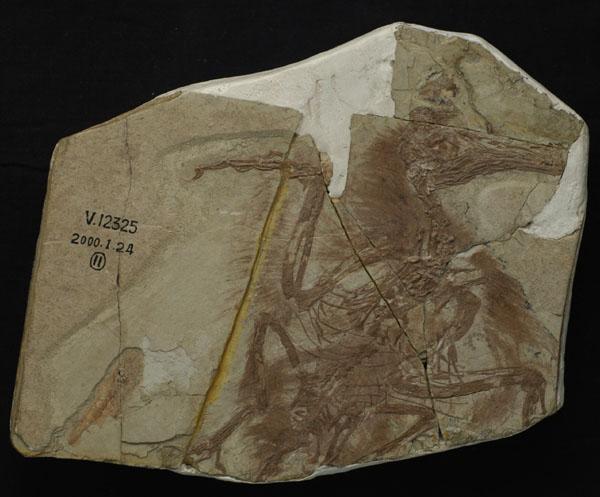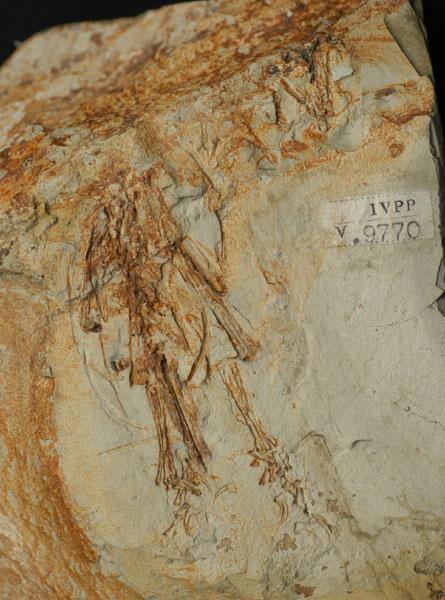Very little was known about Mesozoic birds until nearly complete skeletons began to be discovered in the now famous Jehol Group deposits of northeastern China. The first few specimens to be found were partial skeletons, most preserving only the voids of the bones. Over the past two decades, new specimens have continued to be uncovered at an uprecedented rate.
More recent published discoveries have typically been complete, including feathers, and benefited from recent advances in preparational techniques, thus providing a huge wealth of data regarding species diversity in northeastern China during the Early Cretaceous and the greatest wealth of data on Mesozoic birds anywhere in the world.
Using this new data, a renewed look at the first few Jehol birds to be described reveals new information.
Paleornithologists of the Institute of Vertebrate Paleontology and Paleoanthropology (IVPP), Chinese Academy of Sciences, post-doctor Jingmai O Connor, director ZHOU Zhonghe, and researcher Dr. ZHANG Fucheng, reinvestigated Boluochia zhengi, one of the first birds described from the Jehol deposits. This taxon is very fragmentary, preserving clearly only the ankles and feet, however, this detailed study revealed that this species can now be assigned to the most diverse recognized group of enantiornithines, the Longipterygidae. Other members of this group (Longipteryx, Longirostravis, Shanweiniao and Rapaxavis) are all known from nearly complete specimens and preserve elongate rostra with teeth restricted to the tips of their jaws. This is interpreted as a trophic specialization that would have made food items available to members of this clade that were inaccessible to other birds, and may have contributed to their evolutionary success evident from their high species diversity. Although only a few fragments of the skull are preserved in the only known specimen of Boluochia, O Connor, ZHOU and ZHANG were able to identify subtle clues that hint at the presence of an elongate rostrum in this taxon as well. These, however, could not be recognized until more complete specimens were discovered and available for comparison.
There are two lineages of longipterygids: those that are smaller with reduced hands (Longirostravis, Shanweiniao and Rapaxavis), and a more basal lineage with large claws on the hands and large teeth, before only represented by Longipteryx. Among longipterygids, O Connor, Zhou and Zhang determined that the preserved morphology most closely aligns Boluochia with Longipteryx; unfortunately both taxa are from the younger Jiufotang Formation, and basal longipterygids (those with primitive morphologies such as claws on the hands such as Longipteryx) remain unknown from the older Yixian formation that has produced the apparently more derived Longirostravis and Shanweiniao. Boluochia and Longipteryx share an unusual morphology of the foot, with metatarsals III and IV subequal in length, and a very large and robust pygostyle (the distal tail bone). However, Boluochia can still be distinguished from Longipteryx and the two remain separate species based on the outwards deflection of the outermost foot bone (distal end of metatarsal IV).This project has been supported by the National Natural Science Foundation of China (40121202), National 973 Project (TG20000077706).


Related News
Photos
More>>trade
- He Yong Stressed at the National Experience Exchange Conference of Deepening
- He Guoqiang Stressed at the First Session of the Joint Conference of Corruption
- NBPC Office Holds a Special Lecture on UN Convention Against Corruption and its
- National Experience-Sharing Conference on Deepening Government Affairs Publicity
- The Second Conference of States Parties to the United Nations Convention against
market
- Representatives of the Workshop of Corruption Prevention for Asian and African
- The Workshop of Corruption Prevention for Asian and African Countries Came Back
- He Yong Met With Representatives of the Workshop of Corruption Prevention for
- The Workshop of Corruption Prevention for Asian and African Countries Successful
- The First Phase of Special Discussion of the Workshop of Corruption Prevention
finance
- Students of the Workshop of Civil Servants of Hong Kong Visited NBCP
- Fujian convenes working conference on corruption prevention
- National Roving Seminar on PCT Held in Xi'an
- Shaanxi IP Administration Launches Patent Administrative Law-Enforcement
- Chinese-Foreign Symposium on "IPR System and Protection" Held in Ji'nan





